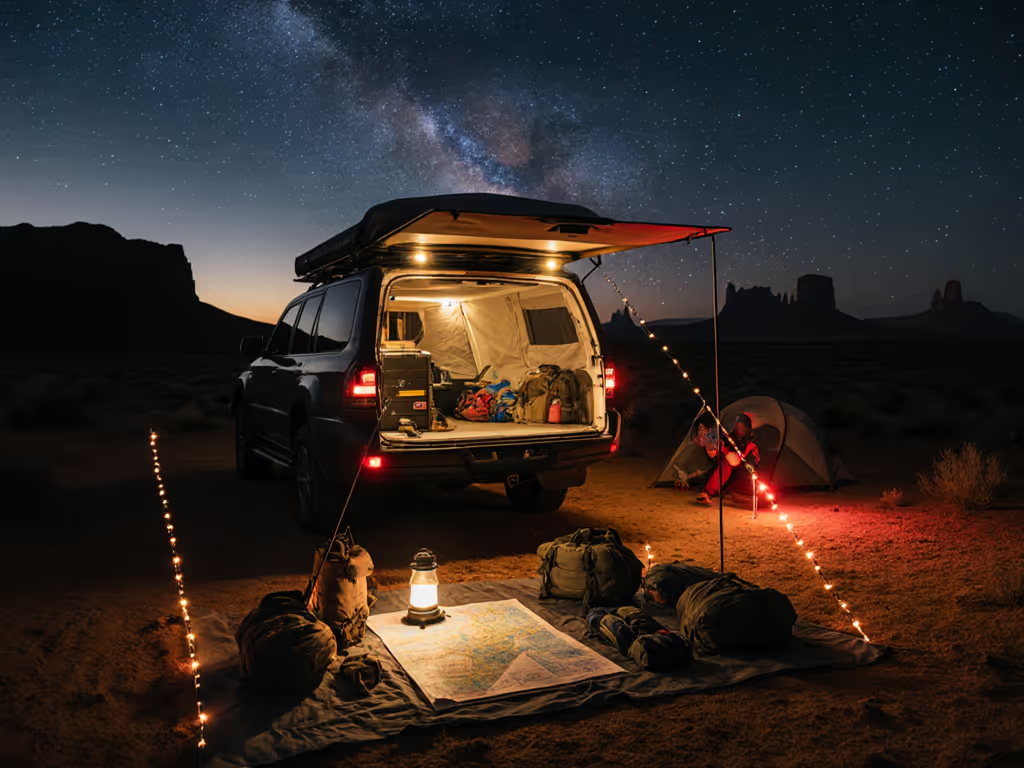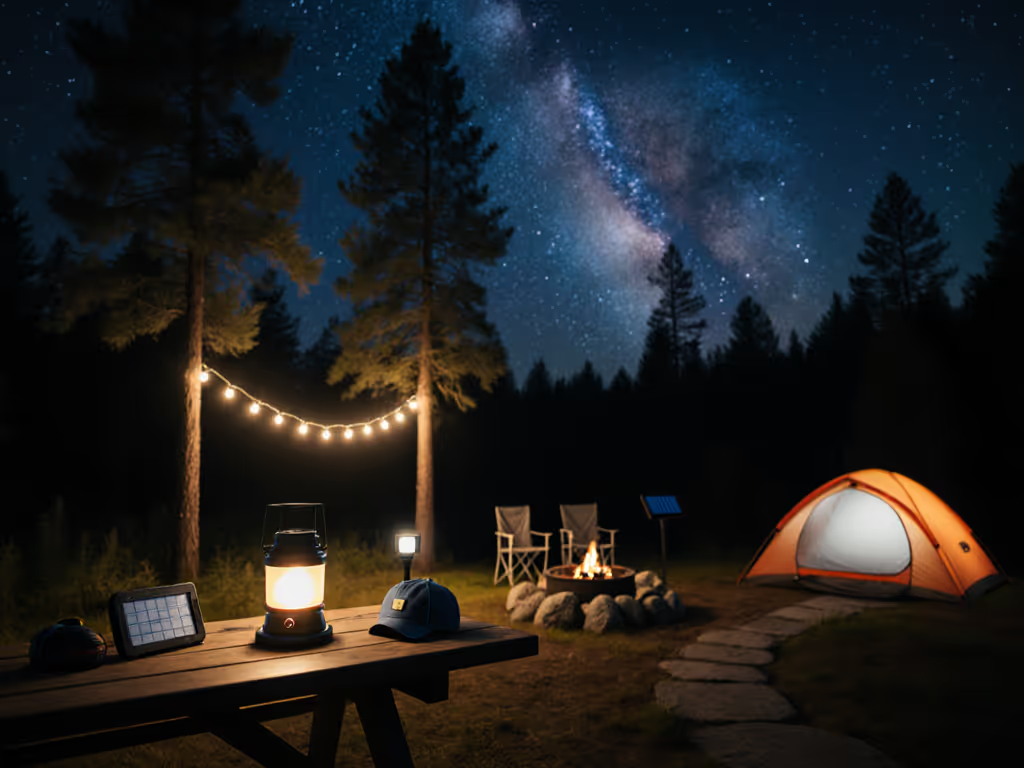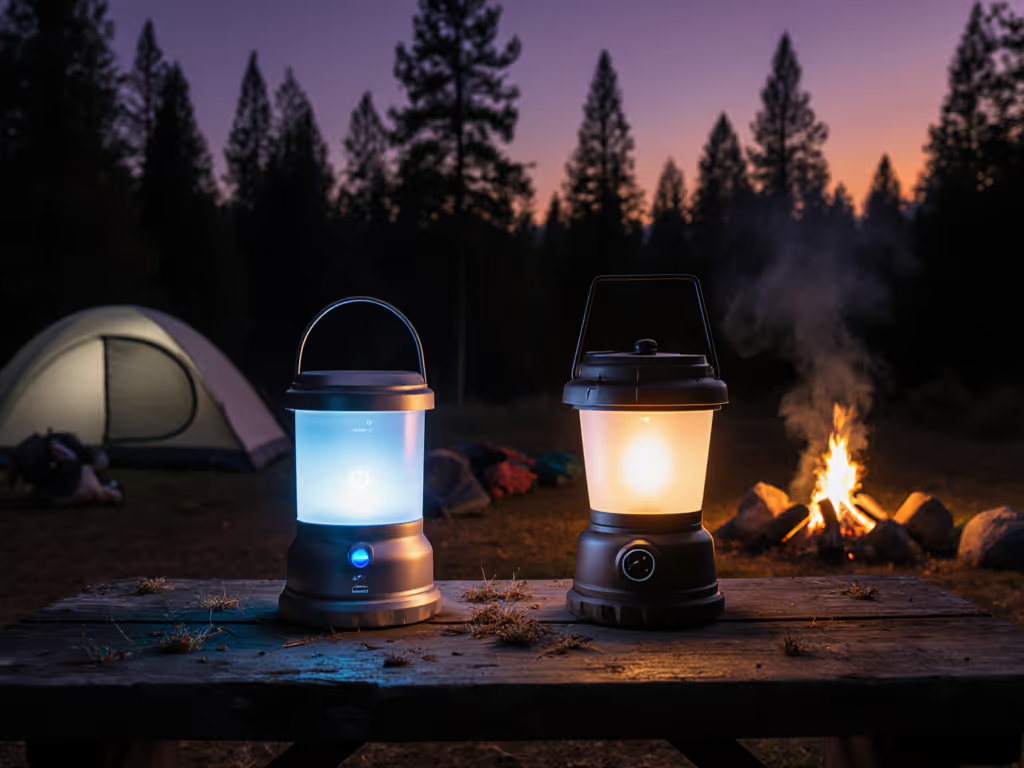
Campsite Pathway Lighting vs String Lights: Safety First
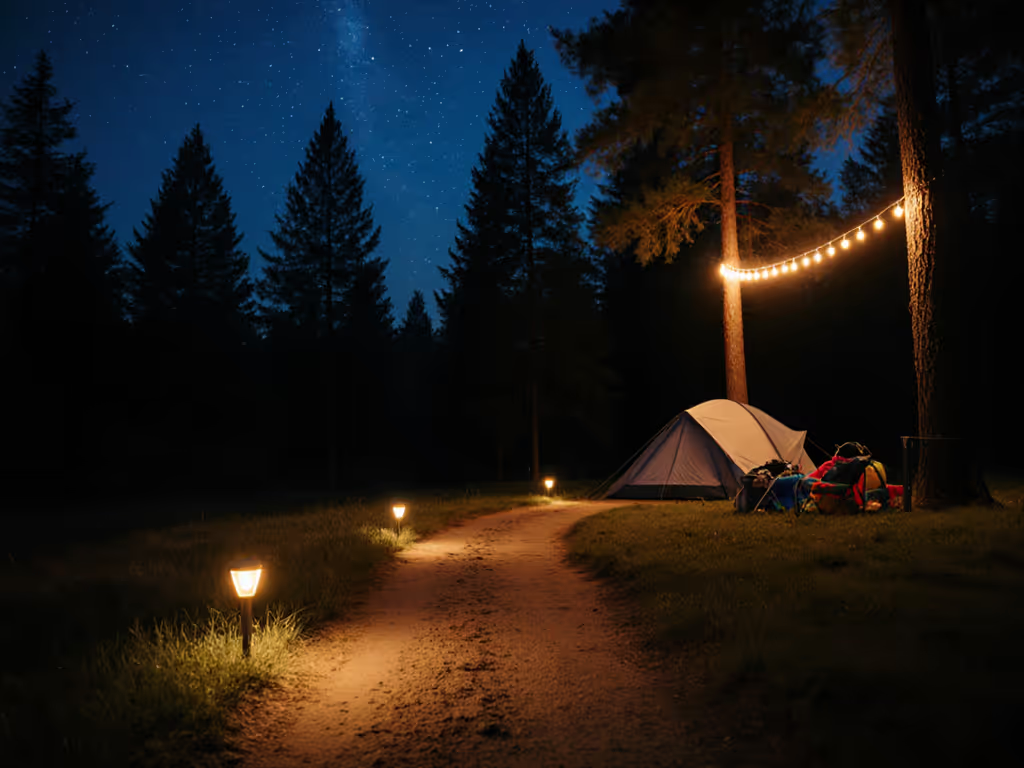
When darkness falls at your campsite, thoughtful campsite lighting makes all the difference between a restful night and a chaotic scramble. For those weighing string lights versus pathway options, the decision isn't just about aesthetics, it is about safety, etiquette, and how light serves your group and surroundings. Light should never dominate the place we're visiting; it should support our activities while respecting the natural environment. As I learned during a family camping trip, when swapping harsh cool LEDs for warmer tones transformed our little one's sleep, lighting choices directly impact our entire experience. Let's explore these options through the lens of campsite navigation safety and responsible illumination.
Gentle light makes every voice easier to hear.
What are the fundamental lighting functions at a campsite?
Before comparing specific fixtures, we need to understand what each lighting type should accomplish:
- Ground-level lighting serves as subtle path markers, revealing trip hazards without overwhelming your night vision
- Task lighting supports cooking, gear organization, and reading with directional, shielded beams
- Ambient lighting creates a calm atmosphere that encourages conversation without disturbing nearby campers
Pathway lighting typically fulfills the first function with purpose-built fixtures designed to illuminate walking surfaces. String lights often serve dual purposes as both ambient and pathway lighting depending on how they're installed. Both approaches can work well when understood and implemented correctly.
How does pathway lighting enhance campsite navigation safety?
Dedicated pathway lighting excels at the specific job of guiding nighttime campsite movement without compromising night vision. Proper pathway fixtures:
- Cast downward illumination that highlights ground obstacles without creating glare
- Operate at ideal heights (12 to 18 inches) to prevent tripping over the fixtures themselves
- Use warm color temperatures (2700 to 3000K) that minimize disruption to circadian rhythms
- Provide consistent spacing to maintain safe illumination along entire routes
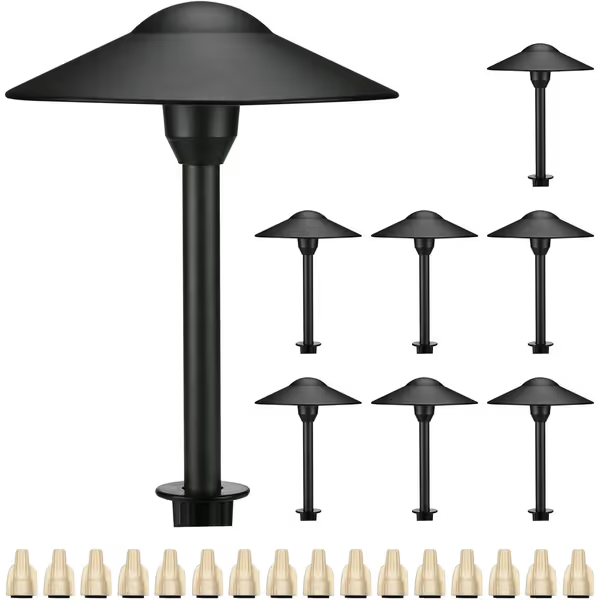
Lumina 4W Landscape Path Lights (8-Pack)
Unlike string lights hung overhead, pathway lighting creates what lighting professionals call "task-appropriate illumination" (just enough light where you need it, without spilling into sleeping areas or neighboring sites). The outdoor path lights I've tested deliver exactly this focused ground-level approach with a 360° downward pattern and a warm 3000K temperature. They are installed at appropriate heights to illuminate paths without creating new hazards.
Why string lights often fail as primary pathway lighting
While string lights add ambiance, they present several challenges for campsite navigation safety:
- Height issues: Hung too high (typically 6+ feet), they create long shadows that actually hide trip hazards rather than revealing them
- Glare problems: Bulbs visible at eye level while walking compromise night vision
- Inconsistent spacing: Gaps between bulbs create alternating light/dark zones that confuse depth perception
- Over-illumination: Bright string lights often wash out the stars and disturb neighboring campers
The most successful string light implementations I've seen use them as supplemental lighting only, hung high enough to create atmosphere but paired with dedicated ground-level markers for actual navigation. Compact chainable LED lanterns work well here, especially with a warm 3500K color temperature and collapsible diffusers that soften the light output. When hung high between trees, they create a pleasing atmosphere while keeping the critical path illumination to purpose-built ground fixtures.
Can string lights work for pathway lighting with proper setup?
Yes, but with significant caveats. If using string lights for pathways:
- Hang them low and tight (no higher than 2 feet above ground level)
- Space bulbs every 18 to 24 inches for consistent illumination
- Use shielded bulbs that direct light downward
- Choose warm white (2700 to 3000K) with high CRI (90+) for accurate terrain recognition
- Employ multiple strands along wider paths to prevent shadows
Solar string lights with rechargeable power offer a convenient solution that avoids cable clutter. A 44-foot warm white option provides enough coverage for most campsites while shatterproof bulbs withstand outdoor conditions. Just remember: when used for pathways, string lights should create a subtle glow, not a brightly lit runway.
How does lighting choice impact night vision preservation?
This is where the differences become critical. Good campsite lighting follows two principles of visual ergonomics:
- Minimal Effective Illumination: Use only as much light as necessary
- Spectral Appropriateness: Choose warmer color temperatures that preserve night vision
String lights often fail on both counts. For a deeper dive into how color temperature impacts night vision and campsite mood, see Warm white vs cool white. Many use cooler white LEDs (4000K+) that immediately destroy night vision, meaning when you look away from the lights, you're essentially blind until your eyes readjust. Pathway lighting installed correctly with warm CCT bulbs maintains what vision scientists call "mesopic vision," the transitional state between full daylight and complete darkness.
Protect the pupil. That's the mantra I repeat when designing campsite lighting. When eyes are constantly adjusting between bright lights and dark areas, fatigue sets in, and hazards become harder to detect. Pathway lighting at appropriate heights with warm temperatures creates a consistent visual environment that reduces eye strain and keeps spatial awareness intact throughout the night.
What lighting setup works best for family camping?
For families with children, the lighting equation becomes more complex. Kids often need reassurance in the dark but wake easily from bright light. The solution lies in segmentation:
- Pathway lighting around the perimeter of your site
- Low-level string lights hung high between trees for ambiance
- Individual nightlights with warm, dimmable LEDs near sleeping areas
- Task lighting with directional beams only when needed
After that memorable family camping trip where my toddler kept waking under harsh cool light, I developed a system using shielded pathway lights along routes and warm string lights high overhead. This created enough ambient glow to ease bedtime fears while preserving sleep quality. When children need to navigate at night, the ground-level markers provide just enough guidance without waking them fully.
What's the most etiquette-conscious approach?
Camping lighting etiquette ultimately comes down to three considerations:
- Containment: Keep your light on your site, not your neighbors'
- Spectral appropriateness: Use warmer tones that minimize disturbance
- Intensity control: Only use as much light as necessary
Pathway lighting generally wins on containment (when properly installed, the light stays close to the ground and within your site boundaries). String lights that hang overhead often spill significant light beyond your designated area, particularly if hung too high. The unspoken rule among experienced campers: if you can see your neighbors' tent details, you're using too much light.
For group camping, consider a lighting master switch that allows everyone to collectively dim or turn off non-essential lighting during quiet hours. This respects varying sleep schedules while maintaining safety for late-night bathroom trips.
How to balance practicality with dark-sky preservation
When choosing between pathway lighting and string lights, remember that both can work if implemented thoughtfully. Here's my decision framework:
- Choose pathway lighting when: Safety is the primary concern, you're in a designated campsite, or you're camping with large groups
- Choose string lights when: Atmosphere is equally important as safety, you're in a dispersed camping area, or you want versatile lighting that serves multiple purposes
Whichever you select, always prioritize:
- Warm color temperatures (2700 to 3000K)
- Shielded fixtures that direct light downward
- Dimmable options for adjusting to conditions
- Proper height placement suited to the task
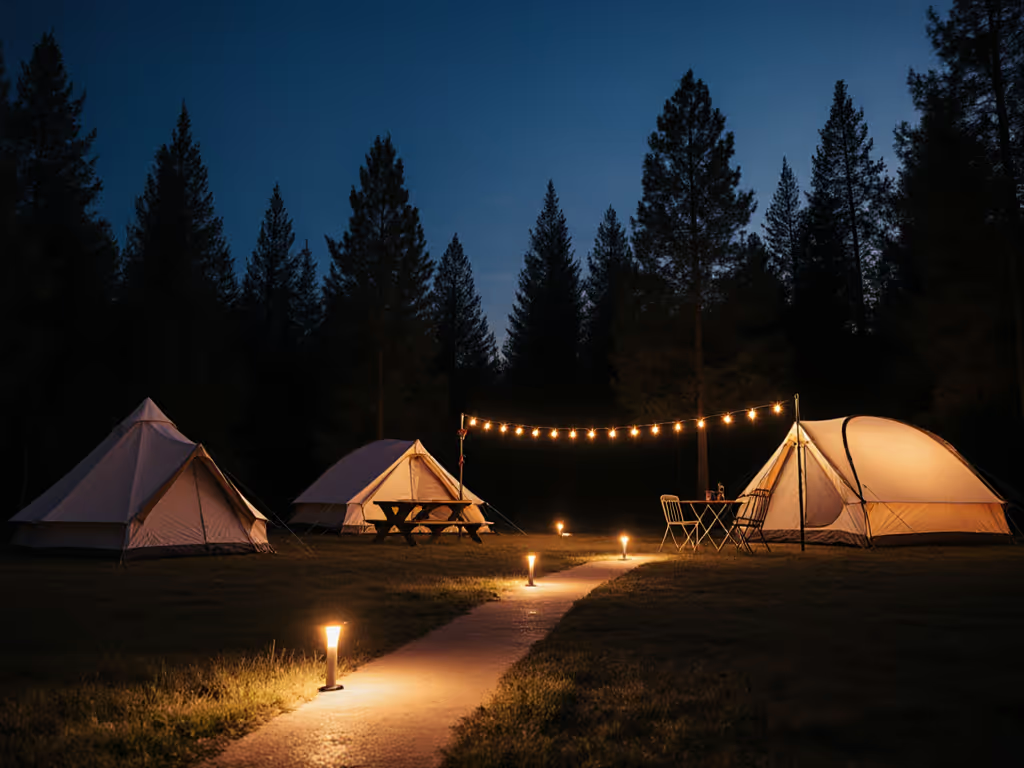
Final thoughts: Lighting as a campsite service
After years of observing how light transforms camping experiences, I've learned that the best campsite lighting isn't noticed, it's felt. When your pathways are safely illuminated but the stars still shine brightly above, when conversations flow easily in the soft glow without disturbing sleeping neighbors, when you move through the night with confidence rather than caution, that is when lighting has done its job.
Your lighting choices reflect your respect for the place you're visiting and the people sharing it with you. As you prepare for your next trip, consider not just what you need to see, but how your light serves the entire campsite community. Choose fixtures that illuminate purposefully, warm gently, and remember: the best campsite lighting makes the darkness your friend rather than your enemy.
Explore more lighting solutions that balance safety and ambiance by checking our curated collection of campsite lighting resources, designed specifically for those who value both star-filled skies and safe nighttime movement.

